A woman who lived in Germany in the late Middle Ages who studied everything and did almost everything. She was an extraordinary person for everything she did, the influence and power she had, how respected and revered she was and how ahead of her time. A nun who was an abbess, scientist, saint, linguist, visionary and prophetess, known as «the sibyl of the rhine«, an incredible woman even in our times.
She was born in the year 1098, the tenth daughter of a noble marriage. She was a girl of delicate health who, at the age of 14, was placed in the monastery of San Disibodo. They gave it as a “tithe”, something very common at the time. The youngest children were given to the Church along with a dowry, both girls and boys. It was, among other things, a way to ensure that they prayed for you and your family and earn a place in “eternal life.” As a child, she told her mentor that she “saw and heard strange things,” who reassured her because she herself had similar episodes. These mystical visions accompanied her throughout her life.

Upon the death of her mentor, she took charge of the small convent in 1136. In 1141 she confided her visions to a monk and was urged to write down what she saw. The monk advised him to do so and he examined these writings, giving them to the abbot of San Disibodo. At that time prophetic visions were reserved for men, so the abbot had a problem. On the other hand, having a visionary nun could attract nuns and donations. Finally they showed Hildegard's texts to the archbishop of Mainz.
After enlisting the support of the most influential monk in the Western world, Bernard of Clairvaux, and letting him take his case to Pope Eugene III, he sent two bishops to evaluate the case and, following Bernard's recommendations, not only granted permission but urged her to “express what he knew through the Holy Spirit”.

From then on, the abbess had a privileged and highly prestigious position, which led to the entry of a large number of girls into the convent. Since he could no longer fit into those rooms, instead of expanding the place, he had a vision in which the Holy Spirit showed him that they should move to the tomb of Saint Rupert. At that time, in the Benedictine order, convents and monasteries were together. The independence of the convent meant loss of prestige and economics for the monastery, which is why it was not viewed favorably. Nor was it well regarded by the entire society, at a time when a woman always depended on a man: father, husband, son, brother, uncle...
Hildegard got what she wanted, being very generous financially with the monastery, although some nuns abandoned her (along with their dowries) because their families did not agree with that independence without a male to control her. She continued studying, researching and writing.

She became an authority to whom people from all over came to listen to her, to ask for advice, to obtain healing, etc. He established communication with popes, statesmen, emperors and other notable figures. She was the only woman whom the Church allowed to preach to the clergy and people in churches and abbeys, throughout different journeys, speaking of what she learned in her visions. For this reason they called her “the Sibyl of the Rhine”.

He wrote a total of 12 books, more than 70 pieces of music. Through her texts, the abbess made interesting contributions to science. Despite believing in a divine origin, he did not think that creation was the result of supernatural intervention but rather of the presence of the four primordial elements that he divided into two classes, the superior or celestial (fire and air) and the inferior or earthly ( water and mud). According to Hildegard, both classes were related as were the macrocosm and the microcosm. He postulated that, regardless of the creative impulse, the mysteries of the cosmos could be explained through observation and reasoning.
He showed great knowledge of botany, medicine and human physiology. He intuited the circulation of blood centuries before it could be proven. She took care of having a varied garden and ensuring that her nuns were fed correctly. He made the most detailed description of the female orgasm that had been made to date. In fact, all his medical explanations about sex are striking for their realism.
She was an abbess, mystic, theologian, doctor, composer, writer, herbalist, scientist, poet, linguist and painter. It could be said that she even acted as a psychologist and philosopher, as can be deduced from the amount of correspondence she maintained and the content of these letters. But she was erased from history for 800 years until the Second World War, when the lack of medicines led people to investigate ancient manuscripts in search of other remedies and they came across her work.
If Hildegard had been a man, her life and work would have been studied for centuries since she was a Renaissance woman in the Middle Ages. He would have been as great as Leonardo. Oh, and he lived to be 81 years old!!

